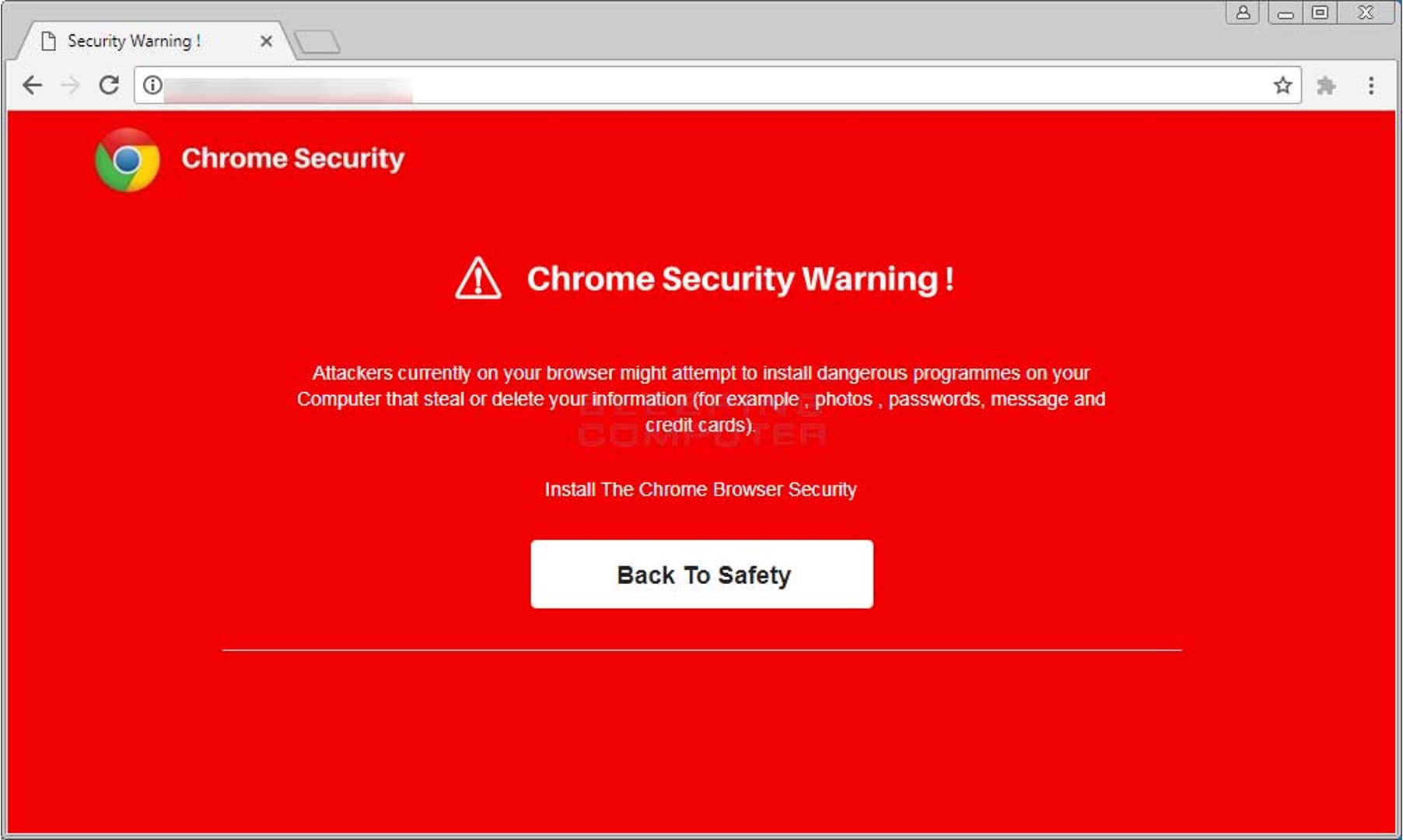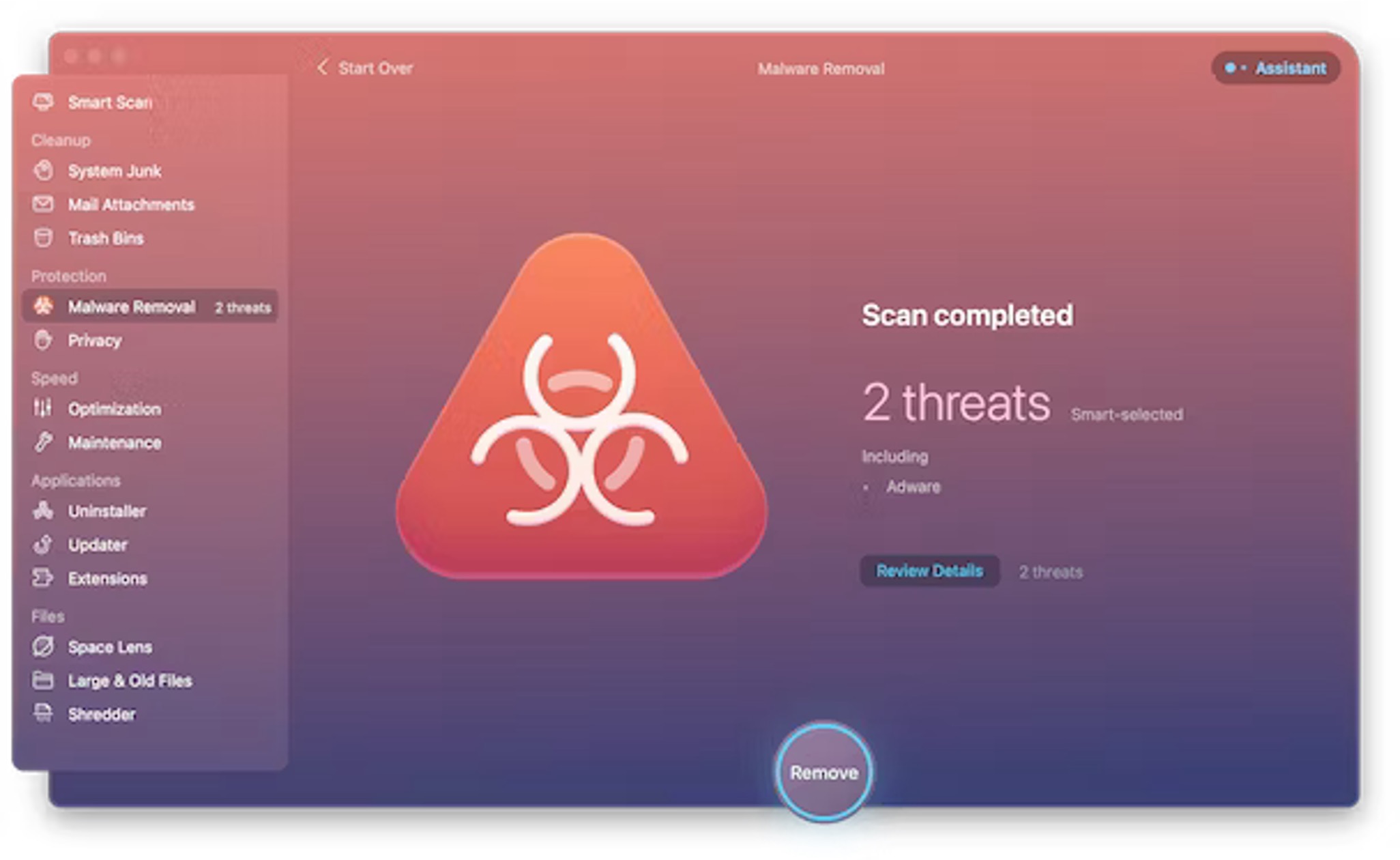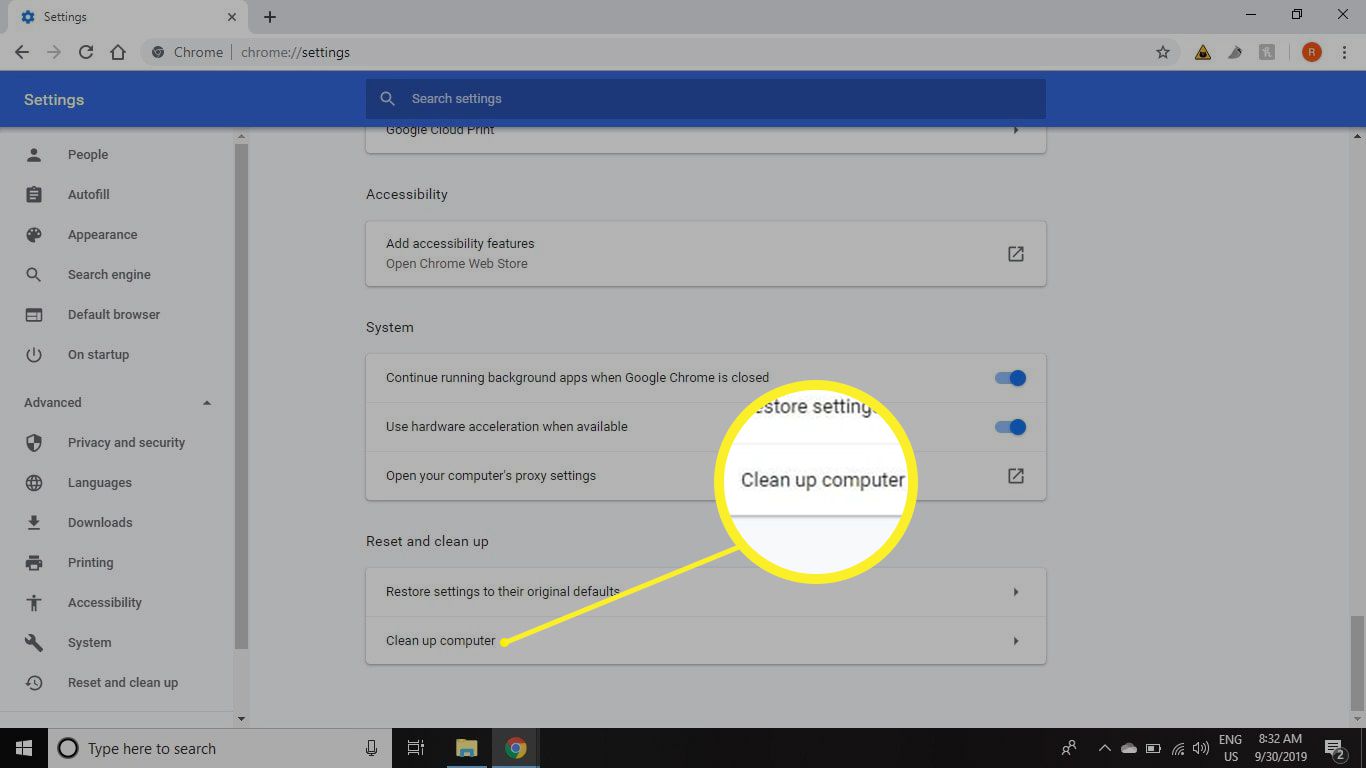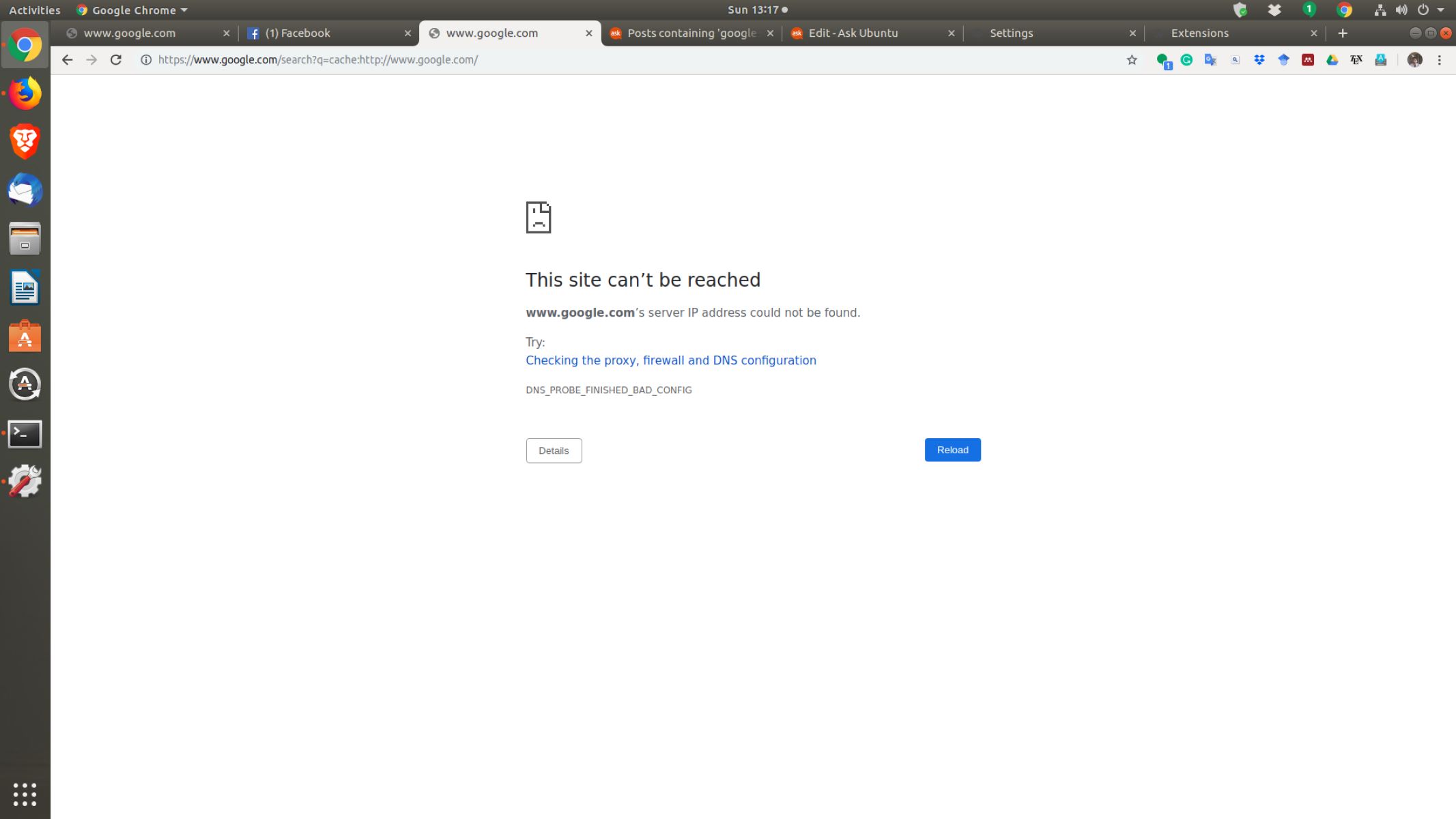Introduction
Dealing with a redirect virus on your Chrome browser can be a frustrating experience. This intrusive malware can hijack your web browsing sessions, redirecting you to unfamiliar and potentially harmful websites. The redirect virus not only disrupts your online activities but also poses a threat to your privacy and security. However, with the right knowledge and tools, you can effectively remove this pesky threat and restore your browser's functionality.
In this comprehensive guide, we will delve into the intricacies of the redirect virus, explore its symptoms, and provide you with practical methods to eliminate it from your Chrome browser. Whether you're encountering sudden redirects, pop-up ads, or unexplained changes in your browser settings, understanding and addressing the redirect virus is crucial to safeguarding your online experience.
By following the step-by-step instructions and leveraging the recommended tools, you can regain control of your Chrome browser and protect your system from potential security risks. Let's embark on this journey to rid your browser of the redirect virus and ensure a safer and more seamless web browsing experience.
Understanding Redirect Virus
The redirect virus, also known as a browser redirect virus, is a type of malware that manipulates web traffic by forcefully redirecting users to unintended websites. This malicious software often infiltrates web browsers, including Chrome, and alters their settings to achieve its nefarious objectives. The primary goal of the redirect virus is to generate web traffic for specific websites, often those of dubious nature, to increase their visibility and, in some cases, to generate revenue through pay-per-click schemes or other deceptive tactics.
One of the most common methods through which the redirect virus infiltrates a user's system is by disguising itself as a seemingly harmless browser extension or software download. Once installed, it can modify the browser's settings, such as the default homepage, search engine, and new tab page, to redirect users to predetermined websites. This unauthorized redirection not only disrupts the user's browsing experience but also exposes them to potentially harmful or fraudulent websites, posing a significant risk to their online security and privacy.
Furthermore, the redirect virus can also lead to an influx of intrusive pop-up ads, banners, and other forms of online advertisements, further exacerbating the user's browsing inconvenience. These ads are often designed to promote questionable products or services, and interacting with them can potentially compromise the user's personal information or lead to further malware infections.
It's important to note that the redirect virus can manifest in various forms, each with its own set of behaviors and characteristics. Some variants may operate subtly, redirecting users infrequently or to seemingly legitimate websites, while others may aggressively reroute users to malicious or fraudulent web pages, making it challenging to discern the legitimacy of the redirection.
Understanding the nature of the redirect virus is crucial in effectively combating its impact on your web browsing experience. By recognizing its behaviors and potential entry points, you can take proactive measures to safeguard your browser and mitigate the risks associated with this pervasive form of malware. In the following sections, we will explore the symptoms of the redirect virus and provide actionable methods to remove it from your Chrome browser, empowering you to regain control of your online activities and protect your system from potential security threats.
Symptoms of Redirect Virus
The presence of a redirect virus can manifest through various discernible symptoms, signaling its intrusive influence on your Chrome browser. By recognizing these symptoms, you can identify the potential presence of the redirect virus and take appropriate measures to address it effectively.
-
Unexplained Website Redirections: One of the most prominent symptoms of a redirect virus is the sudden and unexplained redirection of your web browsing sessions to unfamiliar websites. You may find yourself landing on web pages that you did not intend to visit, often related to advertisements, fake search engines, or potentially malicious content.
-
Altered Browser Settings: The redirect virus often manipulates the default settings of your Chrome browser without your consent. This can include changes to the homepage, default search engine, and new tab page. If you notice unexpected modifications to these settings, it could indicate the presence of a redirect virus.
-
Increased Pop-up Ads: Another common symptom of the redirect virus is a surge in intrusive pop-up ads and banners during your browsing sessions. These ads may appear frequently and promote dubious products or services, disrupting your online experience and potentially exposing you to further security risks.
-
Unresponsive Browser Behavior: The presence of a redirect virus can lead to erratic behavior in your Chrome browser, such as unresponsiveness, slow loading times, or frequent crashes. These anomalies may occur as a result of the virus's interference with the browser's functionality.
-
Search Engine Result Manipulation: When infected with a redirect virus, you may notice that your search engine results are manipulated, leading you to irrelevant or sponsored websites instead of the expected search outcomes. This deceptive tactic aims to drive traffic to specific websites controlled by the perpetrators of the redirect virus.
-
Unauthorized Browser Extensions: The presence of unauthorized or suspicious browser extensions that you did not install is a potential indicator of a redirect virus. These extensions may facilitate the virus's ability to control and manipulate your browsing activities.
By remaining vigilant and recognizing these symptoms, you can promptly address the presence of a redirect virus on your Chrome browser. In the following sections, we will explore effective methods to remove the redirect virus and restore the integrity of your browsing experience.
Methods to Remove Redirect Virus from Chrome
When confronted with the presence of a redirect virus on your Chrome browser, it is imperative to take proactive measures to eliminate this intrusive malware and restore the integrity of your browsing experience. By employing effective methods to remove the redirect virus, you can safeguard your online activities and protect your system from potential security risks. Below are practical and actionable methods to combat the redirect virus and reclaim control of your Chrome browser:
Method 1: Reset Chrome Settings
Resetting the Chrome browser to its default settings can effectively eradicate the influence of the redirect virus. To initiate this process, access the Chrome settings menu, navigate to the "Advanced" section, and select the option to reset the browser settings. This action will revert Chrome to its original state, eliminating any unauthorized modifications caused by the redirect virus.
Method 2: Use Antivirus Software
Leveraging reputable antivirus or anti-malware software can provide a comprehensive solution for detecting and removing the redirect virus from your system. Perform a full system scan using the antivirus software to identify and eliminate any malicious entities, including the redirect virus, thereby fortifying your system against potential security threats.
Method 3: Remove Suspicious Extensions
Inspecting and removing suspicious or unauthorized browser extensions is crucial in combating the redirect virus. Access the Chrome extensions menu, review the installed extensions, and remove any unfamiliar or potentially malicious ones. By eliminating these extensions, you can mitigate the virus's ability to manipulate your browsing activities.
Method 4: Clear Browsing Data
Clearing your browsing data, including cookies, cached images, and files, can help eliminate any remnants of the redirect virus from your Chrome browser. Access the Chrome settings, navigate to the "Privacy and security" section, and initiate the process to clear browsing data. This action can effectively purge the browser of any lingering traces of the redirect virus.
By implementing these methods in a systematic manner, you can effectively remove the redirect virus from your Chrome browser and fortify it against potential future infiltrations. It is essential to remain vigilant and proactive in maintaining the security and integrity of your web browsing activities, thereby ensuring a safer and more seamless online experience.
Method 1: Reset Chrome Settings
Resetting the Chrome browser to its default settings serves as a potent antidote against the pervasive influence of the redirect virus. This method effectively eradicates unauthorized modifications and restores the browser to its original state, thereby neutralizing the disruptive impact of the malware.
To initiate the process of resetting Chrome settings, begin by accessing the Chrome settings menu. This can be accomplished by clicking on the three-dot icon located in the upper-right corner of the browser window and selecting "Settings" from the dropdown menu. Alternatively, you can directly enter "chrome://settings/" in the address bar and press Enter to access the settings interface.
Once within the settings menu, navigate to the "Advanced" section, typically located at the bottom of the page. Clicking on this section will reveal additional options, including the "Reset and clean up" category. Within this category, you will find the option to "Restore settings to their original defaults." Selecting this option will prompt a confirmation dialogue, allowing you to proceed with the reset process.
Upon confirmation, Chrome will initiate the reset procedure, reverting the browser to its default state. This action encompasses the restoration of various settings, including the default homepage, search engine, new tab page, and content settings. Additionally, the reset process will disable all installed extensions and clear temporary data, such as cookies and cached files, effectively purging the browser of any lingering influence of the redirect virus.
It is important to note that resetting Chrome settings will not affect your bookmarks, saved passwords, or browsing history, ensuring that your essential data remains intact throughout the process. However, any custom settings or preferences configured within the browser will be reset to their default values.
By executing the reset procedure, you can effectively eliminate the unauthorized alterations imposed by the redirect virus, thereby reclaiming the integrity and functionality of your Chrome browser. This method serves as a foundational step in combating the intrusive influence of the redirect virus, laying the groundwork for a more secure and seamless web browsing experience.
In the subsequent sections, we will delve into additional methods to further fortify your Chrome browser against the redirect virus, empowering you to safeguard your online activities and protect your system from potential security threats.
Method 2: Use Antivirus Software
Utilizing reputable antivirus or anti-malware software presents a robust and comprehensive approach to combat the pervasive influence of the redirect virus on your Chrome browser. By leveraging the advanced detection and removal capabilities of antivirus software, you can effectively identify and eliminate the redirect virus, fortifying your system against potential security threats and restoring the integrity of your web browsing experience.
To initiate the process of utilizing antivirus software, begin by ensuring that your chosen security solution is up to date. This involves performing a manual update of the antivirus definitions to ensure that the software possesses the latest information regarding known malware threats, including variants of the redirect virus. This proactive measure enhances the software's ability to detect and neutralize the virus effectively.
Once the antivirus software is updated, proceed to perform a full system scan to comprehensively assess your system for any malicious entities, including the redirect virus. The full system scan functionality enables the antivirus software to scrutinize all files, programs, and system areas for signs of malware infiltration, providing a thorough examination of your system's security posture.
During the scanning process, the antivirus software will meticulously analyze the contents of your system, identifying any suspicious or potentially harmful elements. Upon detecting the presence of the redirect virus or any related malware, the antivirus software will prompt you to take appropriate action, typically offering the option to quarantine or remove the identified threats.
It is imperative to follow the recommended course of action provided by the antivirus software to effectively neutralize the redirect virus. This may involve isolating the detected malware in a secure quarantine area or initiating the removal process to eradicate the malicious entities from your system entirely.
By leveraging the advanced capabilities of antivirus software, you can effectively combat the redirect virus and bolster the security of your Chrome browser and system. The proactive utilization of antivirus software serves as a potent defense mechanism against the pervasive influence of malware, empowering you to safeguard your online activities and maintain a secure and seamless web browsing experience.
In the subsequent sections, we will explore additional methods to further fortify your Chrome browser against the redirect virus, providing you with a comprehensive toolkit to address and mitigate the impact of this intrusive malware.
Method 3: Remove Suspicious Extensions
Inspecting and removing suspicious or unauthorized browser extensions is a crucial step in combating the redirect virus and restoring the integrity of your Chrome browser. Browser extensions, also known as add-ons or plugins, enhance the functionality of the browser by providing additional features and customization options. However, malicious actors may exploit these extensions to infiltrate and manipulate the user's browsing activities, making it essential to scrutinize and eliminate any suspicious extensions that could facilitate the redirect virus's influence.
To initiate the process of removing suspicious extensions, access the Chrome extensions menu by clicking on the three-dot icon in the upper-right corner of the browser window and selecting "More tools" followed by "Extensions" from the dropdown menu. Alternatively, you can directly enter "chrome://extensions/" in the address bar and press Enter to access the extensions interface.
Upon accessing the extensions menu, carefully review the list of installed extensions to identify any unfamiliar or potentially malicious ones. Pay close attention to extensions that you did not intentionally install or those with dubious descriptions or functionality. Suspicious extensions may exhibit characteristics such as intrusive pop-up ads, unauthorized access to browsing data, or unexplained changes to the browser's behavior.
Once identified, proceed to remove the suspicious extensions by clicking on the "Remove" or "Trash can" icon associated with each extension. This action will uninstall the selected extension from your Chrome browser, effectively eliminating its potential influence on your browsing activities.
It is important to exercise caution and discernment when removing extensions, ensuring that you only eliminate those that exhibit suspicious or unauthorized behavior. Additionally, consider conducting a thorough review of all installed extensions, even those that appear legitimate, to mitigate the risk of potential vulnerabilities or unauthorized access to your browsing data.
By systematically removing suspicious extensions, you can mitigate the redirect virus's ability to manipulate your browsing activities and fortify the security of your Chrome browser. This proactive measure serves as a pivotal step in combating the intrusive influence of the redirect virus, empowering you to maintain a secure and seamless web browsing experience.
In the subsequent sections, we will delve into additional methods to further fortify your Chrome browser against the redirect virus, providing you with a comprehensive toolkit to address and mitigate the impact of this pervasive malware.
Method 4: Clear Browsing Data
Clearing your browsing data serves as a fundamental and effective method to eliminate any lingering traces of the redirect virus from your Chrome browser. Browsing data encompasses various elements, including cookies, cached images and files, browsing history, and site settings, which collectively contribute to your browsing experience. However, the presence of the redirect virus may result in the accumulation of malicious or unauthorized data within these components, potentially compromising the integrity and security of your browser. By initiating the process to clear browsing data, you can effectively purge your browser of any remnants of the redirect virus, thereby fortifying its resilience against potential security threats.
To commence the process of clearing browsing data, access the Chrome settings menu by clicking on the three-dot icon in the upper-right corner of the browser window and selecting "Settings" from the dropdown menu. Alternatively, you can directly enter "chrome://settings/" in the address bar and press Enter to navigate to the settings interface.
Within the settings menu, navigate to the "Privacy and security" section, typically located in the left-hand sidebar. Here, you will find the option to "Clear browsing data." Clicking on this option will present you with a dialogue box containing various data categories that you can choose to clear, including browsing history, cookies and other site data, cached images and files, and more.
Select the desired time range for which you wish to clear the browsing data. You can choose to clear data from the past hour, day, week, month, or all time, depending on your preferences and the extent of data clearance required. Additionally, you can specify the data categories to be cleared by checking the corresponding checkboxes.
Once you have configured the desired settings, proceed to initiate the process of clearing the browsing data. This action will prompt Chrome to systematically remove the selected data components, effectively purging your browser of any potentially compromised or unauthorized data associated with the redirect virus.
By clearing your browsing data, you can effectively eliminate any residual influence of the redirect virus, thereby enhancing the security and integrity of your Chrome browser. This method serves as a proactive measure to fortify your browser against potential security risks, ensuring a safer and more seamless web browsing experience.
In the subsequent sections, we will explore additional methods to further fortify your Chrome browser against the redirect virus, providing you with a comprehensive toolkit to address and mitigate the impact of this pervasive malware.
Conclusion
In conclusion, addressing the presence of a redirect virus on your Chrome browser is essential to safeguarding your online activities and maintaining the security of your system. The intrusive nature of the redirect virus, characterized by unauthorized website redirections, altered browser settings, and increased pop-up ads, poses a significant risk to your browsing experience and online security. By recognizing the symptoms of the redirect virus and employing the recommended methods to remove it from your Chrome browser, you can effectively mitigate its impact and fortify your browser against potential security threats.
Resetting Chrome settings, utilizing antivirus software, removing suspicious extensions, and clearing browsing data serve as proactive measures to combat the redirect virus and restore the integrity of your web browsing experience. The systematic execution of these methods empowers you to eliminate the unauthorized alterations imposed by the redirect virus, fortify the security of your browser, and mitigate the risk of further malware infiltrations.
Furthermore, maintaining a vigilant approach to browsing habits and exercising caution when interacting with online content can contribute to a more secure and seamless web browsing experience. Regularly updating your browser and operating system, exercising discretion when installing browser extensions or software, and avoiding interactions with suspicious or unverified websites can significantly reduce the risk of encountering the redirect virus and other forms of malware.
By remaining informed about the behaviors and characteristics of the redirect virus and implementing proactive measures to address its presence, you can effectively safeguard your online activities and maintain the integrity of your Chrome browser. Additionally, staying abreast of emerging cybersecurity trends and best practices can further enhance your ability to mitigate potential security risks and ensure a safer and more seamless web browsing experience.
In essence, by leveraging the insights and methods outlined in this guide, you are equipped to combat the pervasive influence of the redirect virus and fortify the security of your Chrome browser. Empowered with this knowledge, you can navigate the digital landscape with confidence, knowing that you possess the tools and understanding to address and mitigate the impact of intrusive malware, thereby ensuring a secure and enjoyable online experience.

























